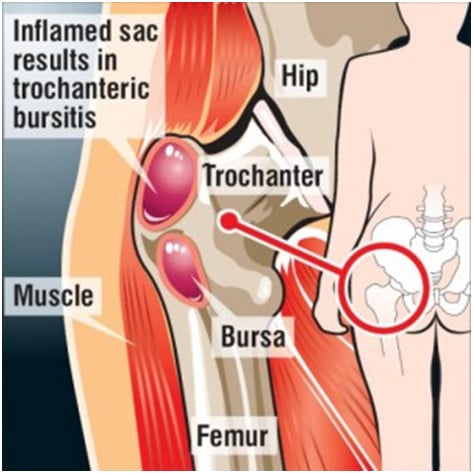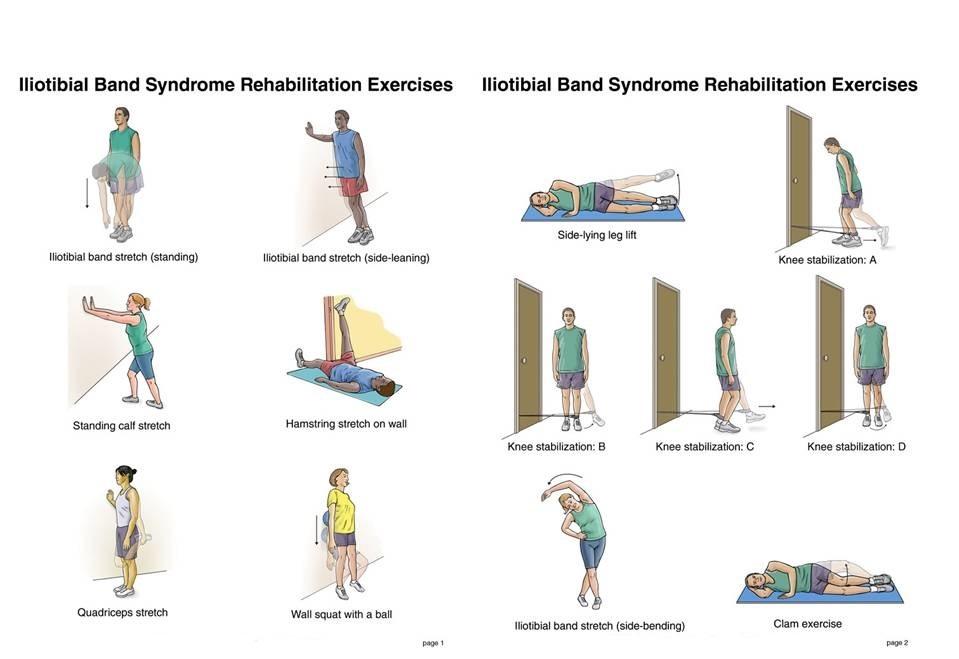An inflammatory condition of a fluid-filled sac that is next to the hip joint. It occupies a superficial position and when when it’s irritated or inflamed it can result in hip pain.
It is usually a slow-process which progresses over time. Typically due to friction, overuse, direct trauma or too much pressure.


